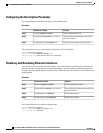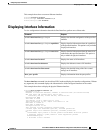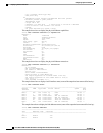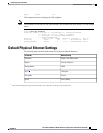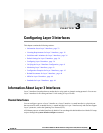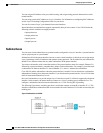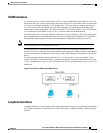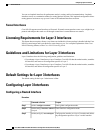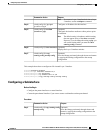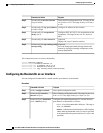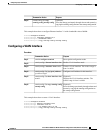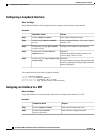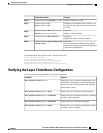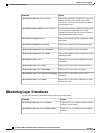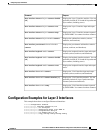
You can use loopback interfaces for performance analysis, testing, and local communications. Loopback
interfaces can act as a termination address for routing protocol sessions. This loopback configuration allows
routing protocol sessions to stay up even if some of the outbound interfaces are down.
Tunnel Interfaces
Cisco NX-OS supports tunnel interfaces as IP tunnels. IP tunnels can encapsulate a same- ayer or higher layer
protocol and transport the result over IP through a tunnel that is created between two routers.
Licensing Requirements for Layer 3 Interfaces
This feature does not require a license. Any feature not included in a license package is bundled with the Cisco
NX-OS system images and is provided at no extra charge to you. For a complete explanation of the Cisco
NX-OS licensing scheme, see the Cisco NX-OS Licensing Guide.
Guidelines and Limitations for Layer 3 Interfaces
Layer 3 interfaces have the following configuration guidelines and limitations:
• If you change a Layer 3 interface to a Layer 2 interface, Cisco NX-OS shuts down the interface, reenables
the interface, and removes all configuration specific to Layer 3.
• If you change a Layer 2 interface to a Layer 3 interface, Cisco NX-OS shuts down the interface, reenables
the interface, and deletes all configuration specific to Layer 2.
Default Settings for Layer 3 Interfaces
The default setting for the Layer 3 Admin state is Shut.
Configuring Layer 3 Interfaces
Configuring a Routed Interface
Procedure
PurposeCommand or Action
Enters global configuration mode.switch# configure terminal
Step 1
Enters interface configuration mode.switch(config)# interface ethernet
slot/port
Step 2
Configures the interface as a Layer 3 interface and deletes
any configuration specific to Layer 2 on this interface.
switch(conifg-if)# no switchport
Step 3
Cisco Nexus 5000 Series NX-OS Interfaces Configuration Guide, Release 5.2(1)N1(1)
36 78-26881-OL
Configuring Layer 3 Interfaces
Tunnel Interfaces



